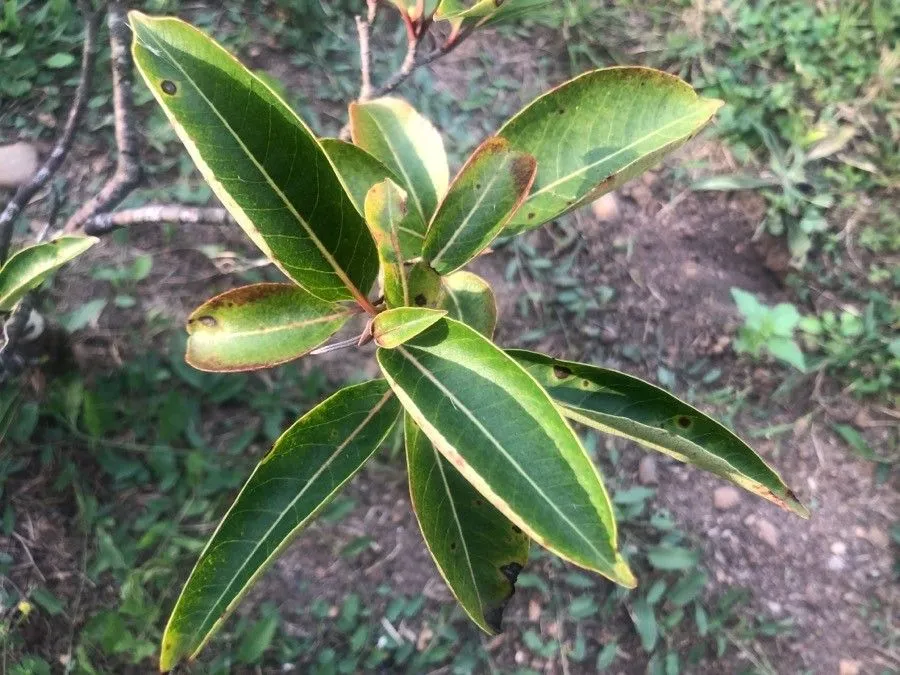
Author: L.
Bibliography: Sp. Pl. ed. 2.: 384 (1762)
Year: 1762
Status: accepted
Rank: species
Genus: Viburnum
Vegetable: Unknown
Observations: E. Canada to NC. & E. U.S.A.
Witherod, scientifically known as Viburnum cassinoides, is a remarkable deciduous shrub belonging to the Viburnaceae family. This plant, recognized for its versatile adaptability and ornamental qualities, was first cataloged in 1762 by the renowned botanist, Carl Linnaeus.
Native to the eastern regions of Canada, stretching down to North Carolina, and similarly prevalent across the eastern United States, Witherod thrives in a variety of habitats. These regions provide the optimal conditions for its growth, from moist woodlands and swamps to the edges of forests and meadows, showcasing its resilience and adaptability.
Witherod is appreciated for its aesthetic appeal throughout the seasons. It typically reaches a height of 6 to 12 feet, forming an attractively rounded shape. The plant’s leaves are an exquisite aspect, transforming from a dark green hue during the growing season to striking shades of red, orange, and purple in the fall. This vibrant transition makes Witherod a favorite among gardeners and landscapers looking to add seasonal interest to their plantings.
In late spring to early summer, Witherod produces flat-topped clusters of creamy white flowers, which are not only visually pleasing but also attract a variety of pollinators, including bees and butterflies. These flowers give way to clusters of berries that progress through an eye-catching color change—from green to pink, and eventually to a striking dark blue-black as they ripen in late summer to early fall. These berries are not just ornamental; they serve as an important food source for birds and other wildlife as they prepare for winter.
Viburnum cassinoides is also valued for its relatively low maintenance requirements. It prefers well-drained, acidic to neutral soils and can thrive in both full sun and partial shade, though it flowers and fruits best with more sunlight. Its tolerance to various soil conditions and its resistance to pests and diseases further enhance its desirability in landscapes and natural areas.
In landscaping, Witherod provides both functional and aesthetic benefits. It can be used as a hedge, a specimen plant, or in mixed borders to provide height and seasonal color. Its ability to adapt to wet conditions also makes it an excellent choice for rain gardens or planted near water features.
In summary, Witherod (Viburnum cassinoides) is a versatile and attractive shrub that enriches the biodiversity and visual appeal of its environment. Its native range, seasonal beauty, wildlife benefits, and ease of care ensure that it remains a cherished addition to gardens and wild landscapes alike.
En: Witherod, Wild raisin, Swamp haw, Withe-rod, Northern wild raisin
Fr: Viorne cassinoïde, Alises, Alisier, Bleuets sains, Bourdaine
Taken Aug 8, 2021 by Diego Alex (cc-by-sa)
Taken Jan 2, 2021 by Diego Alex (cc-by-sa)
Taken Jan 2, 2021 by Diego Alex (cc-by-sa)
Family: Myrtaceae Author: (F.Muell.) K.D.Hill & L.A.S.Johnson Bibliography: Telopea 6: 402 (1995) Year: 1995 Status:…
Family: Rubiaceae Author: Pierre ex A.Froehner Bibliography: Notizbl. Bot. Gart. Berlin-Dahlem 1: 237 (1897) Year:…
Family: Sapindaceae Author: Koidz. Bibliography: J. Coll. Sci. Imp. Univ. Tokyo 32(1): 38 (1911) Year:…
Family: Asteraceae Author: A.Gray Bibliography: Pacif. Railr. Rep.: 107 (1857) Year: 1857 Status: accepted Rank:…
Family: Fabaceae Author: Medik. Bibliography: Vorles. Churpfälz. Phys.-Ökon. Ges. 2: 398 (1787) Year: 1787 Status:…
Family: Aspleniaceae Author: (Cav.) Alston Bibliography: Bull. Misc. Inform. Kew 1932: 309 (1932) Year: 1932…